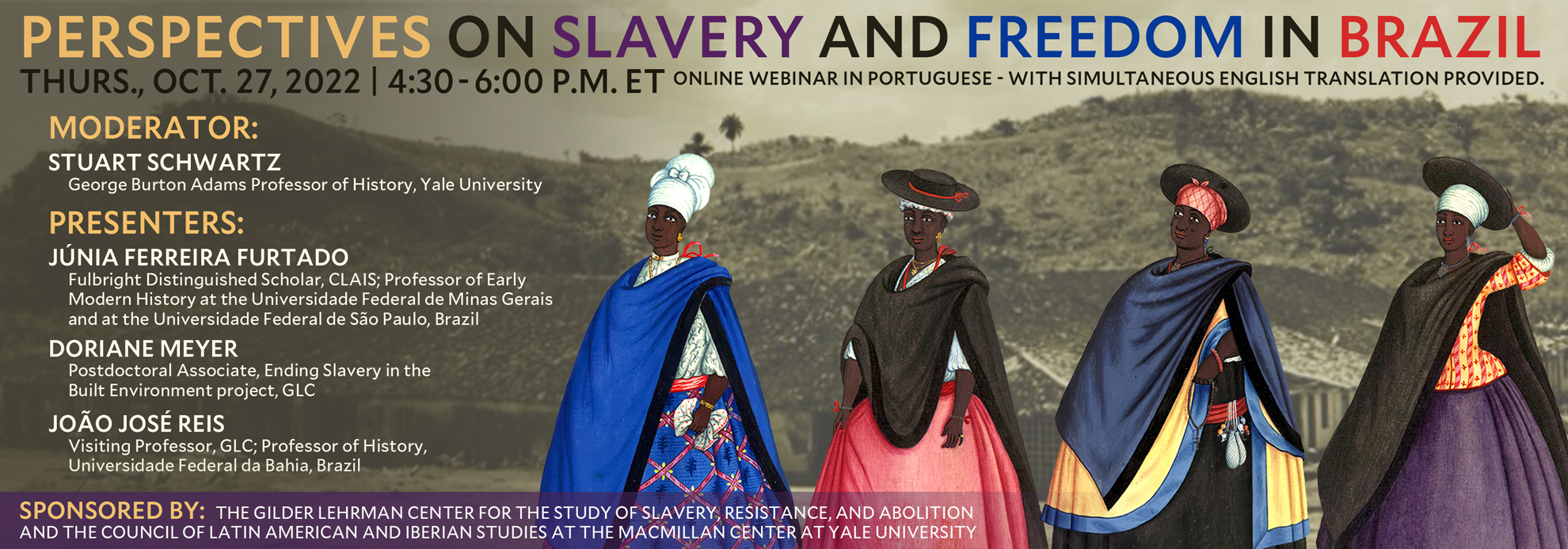Perspectives on Slavery and Freedom in Brazil

In Portuguese, with simultaneous English translation provided. Scroll to the bottom of this page for registration.
Sponsored by:
- Gilder Lehrman Center for the Study of Slavery, Resistance, and Abolition (GLC)
- Council of Latin American and Iberian Studies (CLAIS)
- The MacMillan Center at Yale University
Moderator: Stuart Schwartz (George Burton Adams Professor of History, Yale University)
Presenters:
· Júnia Ferreira Furtado (Fulbright Distinguished Scholar, CLAIS; Professor of Early Modern History at the Universidade Federal de Minas Gerais (UFMG) and at the Universidade Federal de São Paulo, Brazil)
· Doriane Meyer (Postdoctoral Associate, Ending Slavery in the Built Environment project, GLC)
· João José Reis (Visiting Professor, GLC; Professor of History, Universidade Federal da Bahia, Brazil)
Junia Furtado; “Black Pearls in the Little Africa: the women of color in Tejuco village, Brazil, XVIII century”
The village of Tejuco, now the town of Diamantina, was the headquarters of the Diamond District, placed in the Northeast of Minas Gerais captaincy. My aim is through a Census and a Map, both produced in 1774, show some layers of the feminine geography of the social life of the town, revealing a more dynamic and plural configuration, where a significant number of people of color, mostly black African women, were heads of household. Their presence transformed Tejuco into a Little Africa.
João Reis: “The Biography of An Enslaved African who Became An African Enslaver in 19th-Century Bahia, Brazil”
Manoel Joaquim Ricardo, an African from Hausaland, landed in Bahia in c. 1806 as an enslaved person, became a successful merchant, and died a rich freedman in 1865. At death he owned property that included twenty-seven slaves, four houses, and two small farms in the outskirts of Salvador. The extraordinary trajectory of this man is the subject of a book that I am presently writing.
Doriane Meyer: “Landscapes of Power and Resistance”
The built environment of the plantations was a spatial projection of unequal power relations, a territory defined by the power of those who were in charge. However, the enslaved workers, using their familiarity with the plantation spaces, carried out acts of resistance. Today, Brazilian landscapes still reflect the legacy of slavery, and the maids’ rooms in the residences replicate the architecture of the plantations. This study aims to contribute to scholarship about how architecture participated in the foundations of an unequal Brazilian society.
